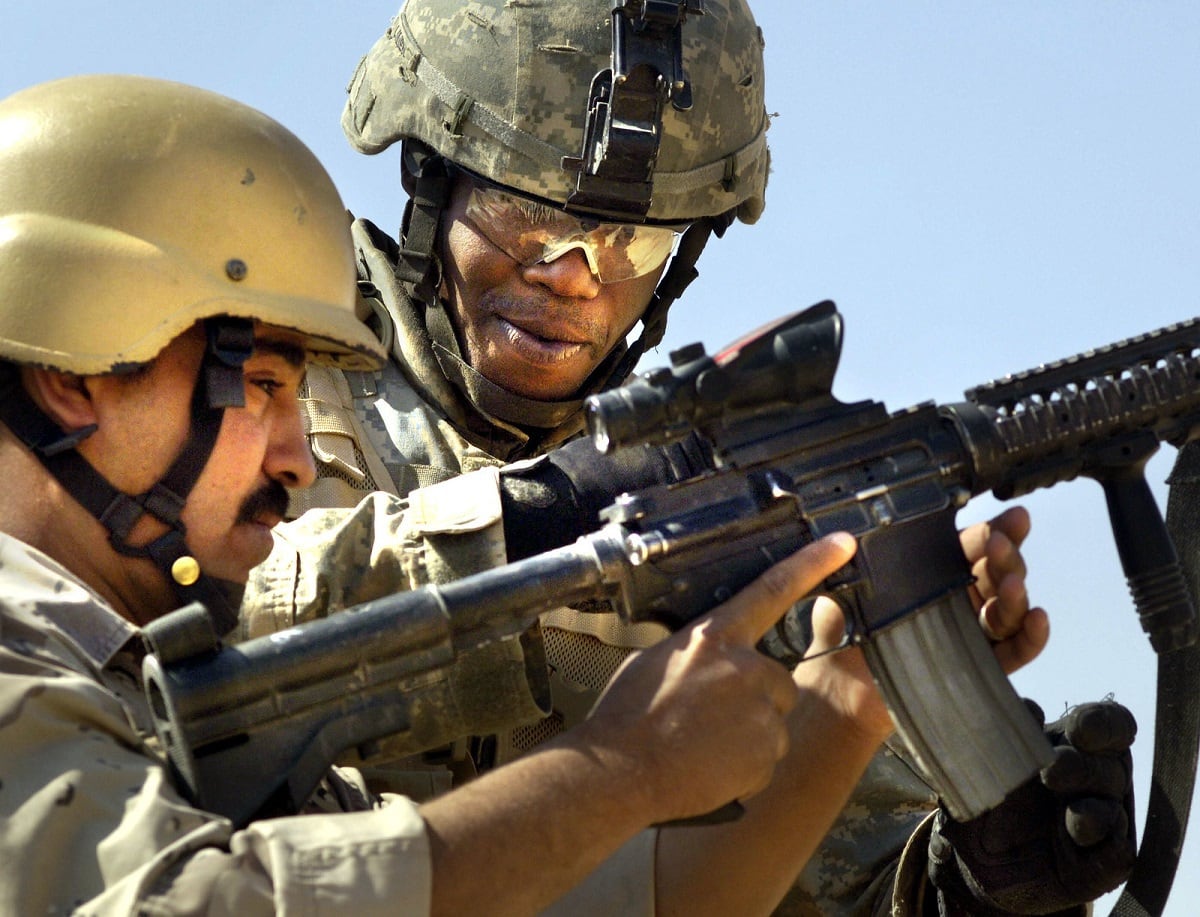On Monday, President Biden announced that U.S. troops in Iraq would be out of the combat business at the end of the year, but said the troops would “continue to train, to assist” Iraqi Security Forces starting in January 2022. This represents the latest in a multi-generational unwillingness on Washington’s part to acknowledge reality and get our troops completely out of Iraq – and keep them out.
A Long, Tortured History
When viewed in its 30-year context the fierce resistance of every Administration to withdraw from Iraq is breathtaking. The American military presence in Iraq started in 1991 when President George H.W. Bush ordered a massive force to the Middle East to push Saddam Hussein’s forces out of Kuwait and back into Iraq.
After the successful conclusion of Operation Desert Storm, Bush mostly withdrew our troops, but established American ground support to Kurds in the north and eventually established a northern and southern no-fly zone. Bush’s successor, Bill Clinton, inherited the mission in 1993 and for all eight years of his Administration maintained the status quo.
In 1996 Clinton ordered a series of missile attacks against Iraqi military targets for alleged threatening the Kurdish population of his country. Without explaining how, Clinton claimed that Iraq’s troop movements within his own country represented a clear threat to American national interests.
The strikes “demonstrate once again that reckless acts have consequences,” Clinton claimed, and added that his attacks were designed “to reduce Saddam’s ability to strike out again at his neighbors (and) to increase America’s ability to prevent future acts of violence and aggression.” Clinton’s successor fared no better.
Less than one month into office, President George W. Bush authorized his first missile strike into Iraq. The strikes were “part of a strategy,” the president claimed, “and until that strategy is changed, if it is changed, we will continue to enforce them.” Bush never explained what the strategy actually was, what its objectives were, or how he intended to accomplish them. The terrorist attacks of 9/11 supercharged Bush’s Iraq policy and laid the foundation for his ill-fated invasion in March 2003.
A Never-Ending War
After the disastrous, expensive and bloody multi-year counter-insurgency that followed the regime-change operation, Bush handed off the mission to President Obama in January 2009. In October 2011, Obama reported that, “as promised, the rest of our troops in Iraq will come home by the end of the year. After nearly nine years, America’s war in Iraq will be over.” Except it wasn’t.
Three years later, when the Iraqi army melted before paltry resistance of the Islamic State, Obama’s resolve likewise wilted. In response to the ISIS advance, Obama said he was, “prepared to send a small number of additional American military advisors — up to 300 — to assess how we can best train, advise, and support Iraqi security forces going forward.” However, he emphasized, “American forces will not be returning to combat in Iraq, but we will help Iraqis as they take the fight to terrorists.”
Over the next two years, Obama would authorize multiple increments of additional combat troops to Iraq, eventually rising to over 5,000, and were very much engaged in combat, including some Americans being killed in action. Candidate Trump, who criticized Obama’s expansion of combat troops to Iraq, said he believed Obama “should have gotten out” of Iraq long ago. Once in office, however, Trump followed in the footsteps of all his predecessors.
Trump Continues the Forever War
By late 2017, Trump had quietly increased the number of troops in Iraq by over 3,000, for a total reportedly exceeding 8,800. In all fairness, Trump at least gave the U.S. Armed Forces a militarily attainable task: deprive ISIS of its territorial holdings in Iraq. That mission was accomplished by December 2017 in Iraq (and in Syria, by March 2019). By all rights, with the attainment of that military objective, our troops should have been completely withdrawn.
What Will Biden Do?
Now Biden enters office and instead of acknowledging that our troops are not providing any benefit to American national security, he simply rebrands the troops in Iraq, while changing nothing of substance. Biden should either provide Congress with a clear, compelling and attainable military mission for our troops in Iraq or he should withdraw them all. Regardless of this rebranding exercise and the claim they won’t “be in a combat mission” come 2022, the reality is they will continue, daily, to be in harm’s way.
Already this year they’ve been attacked 50 times this year by various violent extremist groups; that won’t stop because we change the term we use to describe our troops. Every president since George H.W. Bush has refused to withdraw our troops from Iraq despite the fact our security has not been threatened by Iraq. Biden deserves credit for ending the war in Afghanistan and fully withdrawing all those troops. For the same reasons, he should do the likewise in Iraq.
Daniel L. Davis is a Senior Fellow for Defense Priorities and a former Lt. Col. in the U.S. Army who deployed into combat zones four times. He is the author of “The Eleventh Hour in 2020 America.” Follow him @DanielLDavis1

